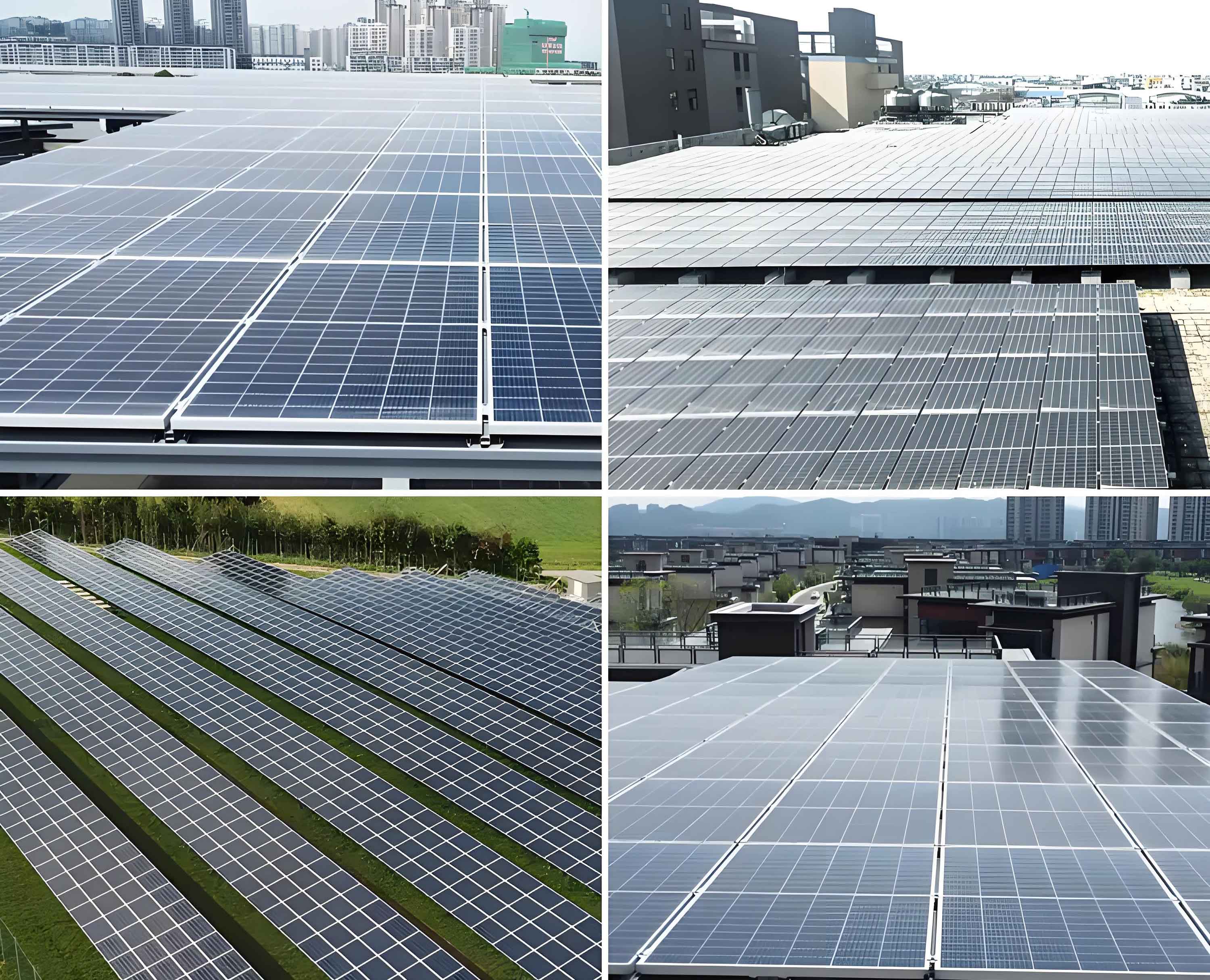Introduction
The integration of solar panels with smart grid technology represents a significant advancement in renewable energy utilization and energy management. Solar panels harness the sun’s energy and convert it into electricity, while smart grid technology optimizes the distribution and use of this electricity. This synergy can lead to enhanced energy efficiency, reduced costs, and a more resilient energy infrastructure. This article delves into the benefits, challenges, and future prospects of combining solar panels with smart grid technology.

Benefits of Integrating Solar Panels with Smart Grid Technology
1. Improved Energy Efficiency
Solar panels generate electricity from sunlight, a renewable resource. When integrated with smart grid technology, this energy can be more efficiently distributed and utilized. Smart grids enable real-time monitoring and control of electricity flow, ensuring that energy from solar panels is used optimally.
2. Enhanced Grid Stability
Smart grid technology can balance supply and demand more effectively. By integrating solar panels, which provide decentralized energy production, smart grids can reduce the strain on centralized power plants and improve overall grid stability.
3. Cost Savings
Integrating solar panels with smart grid technology can lead to significant cost savings for both consumers and utility companies. Consumers can benefit from reduced energy bills, while utility companies can lower operational costs by optimizing energy distribution and reducing the need for expensive infrastructure upgrades.
4. Environmental Benefits
The combination of solar panels and smart grid technology contributes to environmental sustainability. Solar panels reduce reliance on fossil fuels, lowering greenhouse gas emissions. Smart grids enhance the efficiency of energy use, further reducing the environmental impact.
Challenges in Integrating Solar Panels with Smart Grid Technology
1. Technological Complexity
Integrating solar panels with smart grid technology involves complex technological solutions. It requires advanced software, robust communication systems, and sophisticated hardware to manage and control energy flows efficiently.
2. Initial Investment
The initial investment for installing solar panels and upgrading the grid to smart grid technology can be substantial. However, these costs are often offset by long-term savings and environmental benefits.
3. Regulatory and Policy Hurdles
Regulatory frameworks and policies need to evolve to support the integration of solar panels with smart grid technology. This includes ensuring fair pricing mechanisms, incentivizing renewable energy adoption, and promoting grid modernization efforts.
Key Components of Smart Grid Technology
The successful integration of solar panels with smart grid technology depends on several key components:
Advanced Metering Infrastructure (AMI)
Advanced Metering Infrastructure (AMI) includes smart meters that provide real-time data on energy consumption. This data is crucial for optimizing the use of energy generated by solar panels.
Distributed Energy Resources (DERs)
Distributed Energy Resources (DERs) encompass a variety of small-scale energy sources, including solar panels, wind turbines, and battery storage systems. Integrating these resources into the smart grid enhances energy reliability and resilience.
Demand Response (DR)
Demand Response (DR) programs encourage consumers to adjust their energy usage during peak demand periods. By integrating solar panels, smart grids can better manage energy supply and demand, reducing the need for additional power generation.
Energy Management Systems (EMS)
Energy Management Systems (EMS) monitor and control energy usage within a grid. These systems are essential for optimizing the distribution of energy from solar panels and ensuring efficient grid operation.
Table: Comparison of Traditional Grids and Smart Grids with Solar Panels
| Feature | Traditional Grids | Smart Grids with Solar Panels |
|---|---|---|
| Energy Source | Centralized, fossil fuels | Decentralized, renewable (solar panels) |
| Energy Efficiency | Lower | Higher |
| Grid Stability | Less stable | More stable |
| Cost | Higher operational costs | Lower operational costs |
| Environmental Impact | Higher greenhouse gas emissions | Lower greenhouse gas emissions |
| Technological Infrastructure | Basic | Advanced |
| Consumer Interaction | Minimal | High |
Future Prospects of Integrating Solar Panels with Smart Grid Technology
Increased Renewable Energy Adoption
As technology advances and costs decrease, the adoption of solar panels and smart grid technology is expected to increase. This will lead to a greater share of renewable energy in the overall energy mix, promoting sustainability.
Smart Homes and Energy Autonomy
The integration of solar panels with smart grid technology paves the way for smart homes that can generate, store, and manage their own energy. This autonomy can lead to energy independence and increased resilience against power outages.
Enhanced Energy Security
Smart grids with integrated solar panels can enhance energy security by reducing dependence on centralized power sources and diversifying the energy supply. This decentralization makes the energy system more resilient to disruptions.
Technological Innovations
Ongoing research and development in both solar panel technology and smart grids will continue to drive innovations. These advancements will improve efficiency, reduce costs, and further integrate renewable energy sources into the grid.
Conclusion
Integrating solar panels with smart grid technology offers numerous benefits, including improved energy efficiency, enhanced grid stability, cost savings, and environmental benefits. Despite challenges such as technological complexity and initial investment costs, the future prospects are promising. As technology advances and adoption increases, the combination of solar panels and smart grid technology will play a crucial role in shaping a sustainable and resilient energy future.
List of Key Takeaways
- Solar panels generate renewable energy, which can be optimized by smart grid technology.
- Smart grids enable real-time monitoring and control, improving energy efficiency.
- Integration of solar panels with smart grids enhances grid stability and reduces costs.
- Environmental benefits include lower greenhouse gas emissions and reduced reliance on fossil fuels.
- Key components of smart grids include Advanced Metering Infrastructure, Distributed Energy Resources, Demand Response programs, and Energy Management Systems.
- Future prospects include increased renewable energy adoption, smart homes, enhanced energy security, and ongoing technological innovations.
